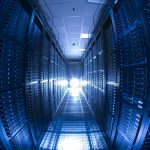From Sanford Underground Research Facility, May 26, 2020: Unwilling to ignore flaws in the Standard Model, physicists are looking for a new, more perfect model of the subatomic universe. And many are hoping that the international Deep Underground Neutrino Experiment, hosted by Fermilab, can put their theories to the test.
DUNE
From Gizmodo, May 18, 2020: Neutrino physics is a trek into the unknown, one that the United States physics community has chosen to pursue full-on. A flagship experiment called LBNF/DUNE will lead the search, in pursuit of answers that may take decades or more to find. Fermilab Deputy Director for Research Joe Lykken, DUNE spokesperson Ed Blucher, and DUNE scientists Chang Kee Jung and Elizabeth Worcester talk about how neutrinos will enhance our understanding of the universe.
From Sanford Underground Research Facility, May 19, 2020: The international Deep Underground Neutrino Experiment, hosted by Fermilab, will be tuned to see neutrinos streaming from a nearby supernova. Such neutrino interactions could give researchers insight into one of the explosive processes that formed the elements in our solar system and our planet.
From the University of Bern, May 2020: The University of Bern and Fermilab partner on three neutrino projects aimed at a thorough study of some postulated properties of the ghostly particle: MicroBooNE, SBND and the Deep Underground Neutrino Experiment, the latter to be considered the world’s ultimate neutrino observatory.
From Sanford Underground Research Facility, May 12, 2020: Part I in Sanford Lab’s series exploring the science goals of the international Deep Underground Neutrino Experiment discusses antimatter, CP violation and the origins of the universe.
The detector for the international Deep Underground Neutrino Experiment will collect massive amounts of data from star-born and terrestrial neutrinos. A single supernova burst could provide as much as 100 terabytes of data. A worldwide network of computers will provide the infrastructure and bandwidth to help store and analyze it. Using artificial intelligence and machine learning, scientists are writing software to mine the data – to better understand supernovae and the evolution of our universe.
From INFN, April 9, 2020: L’industria di solito non utilizza l’elettronica che opera a temperature criogeniche, perciò i fisici delle particelle hanno dovuto costruirsela da sé. Una collaborazione tra numerosi laboratori nazionali afferenti al Dipartimento dell’Energia, incluso il Fermilab, ha sviluppato prototipi dell’elettronica che verrà alla fine utilizzata nell’esperimento internazionale DUNE – Deep Underground Neutrino Experiment, ospitato dal Fermilab.
From Scientific American, April 23, 2020: New evidence from neutrinos points to one of several theories about why the cosmos is made of matter and not antimatter. Fermilab scientists Marcela Carena and Jessica Turner and DUNE spokesperson Ed Blucher weigh in.
From Quanta Magazine, April 15, 2020: The first official evidence of a key imbalance between neutrinos and antineutrinos provides one of the best clues for why the universe contains something rather than nothing. Fermilab scientist Debbie Harris comments on the T2K experiment’s latest result. Fermilab’s NOvA experiment and the international Deep Underground Neutrino Experiment, hosted by Fermilab, will also help provide a more precise understanding of the asymmetry.
From BBC News, April 16, 2020: Stars, galaxies, planets, pretty much everything that makes up our everyday lives owes its existence to a cosmic quirk. The nature of this quirk, which allowed matter to dominate the universe at the expense of antimatter, remains a mystery. Now, results from the T2K experiment in Japan has given strong hints that the CP violation effect could be large for neutrinos. The international Deep Underground Neutrino Experiment, hosted by Fermilab, might detect the effect faster than expected.

